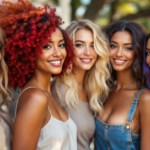Taylor Swift, a name synonymous with global stardom, has redefined the music industry, fashion, and modern aesthetics. Her unique blend of country roots, pop transitions, and visual storytelling has made her a pop culture icon. In this article, we’ll explore the different facets of Taylor Swift’s aesthetics, the evolution of her personal style, and how she influences modern pop culture. With a sharp eye on her music videos, concert performances, and personal branding, we’ll dive into how Taylor Swift embodies modern beauty standards and continues to inspire millions.
Table of Contents
- The Rise of Taylor Swift: A Brief Overview
- The Evolution of Taylor Swift’s Aesthetic
- Taylor Swift’s Music Videos: A Visual Journey
- Concerts and Live Performances: Stage Aesthetics
- Taylor Swift’s Fashion Influence
- Social Media and Branding: How Taylor Shapes Her Aesthetic
- The Swiftie Effect: Fans and Their Interpretation of Aesthetic
- Taylor Swift and Feminism in Modern Pop Culture
- The Business of Aesthetic: Taylor’s Branding Genius
- FAQ: Everything You Need to Know about Taylor Swift’s Aesthetic
1. The Rise of Taylor Swift: A Brief Overview
Taylor Swift was born on December 13, 1989, in Reading, Pennsylvania. From an early age, her love for music was evident. She moved to Nashville to pursue a career in country music, and at just 14, she signed her first record deal. Her self-titled debut album, Taylor Swift (2006), became an instant hit, marking the start of her musical journey.
Swift’s early music showcased a country-pop fusion, with relatable lyrics about love and heartbreak. But as her career grew, so did her aesthetic. Today, Taylor Swift is not just a musician; she’s an artist, businesswoman, and cultural phenomenon who has crafted her image as carefully as she writes her lyrics.
2. The Evolution of Taylor Swift’s Aesthetic
Taylor Swift’s aesthetic has evolved alongside her career. Her early country days saw her in sundresses, cowboy boots, and long curly hair, reflecting her girl-next-door image. Albums like Fearless and Speak Now showcased a youthful innocence. However, with the release of Red (2012), we began to see a shift.
In 1989 (2014), her transition to pop was mirrored by a sleeker, modern aesthetic. Short hair, bold red lips, and vintage-inspired clothing became her signature. Swift’s Reputation (2017) era, however, was a departure. Darker tones, snake motifs, and edgier fashion choices portrayed a fiercer, unapologetic side. Recently, Lover and Folklore introduced a whimsical, soft, and dream-like aesthetic, showing her versatility.
3. Taylor Swift’s Music Videos: A Visual Journey
Music videos are a significant part of Taylor Swift’s aesthetic. Her ability to tell stories through visual media sets her apart from other artists. In Love Story (2008), Swift used a fairytale theme, matching her country-pop persona. Fast forward to Blank Space (2014), and the video’s modern, elegant, and satirical narrative showcases a sophisticated aesthetic shift.
The Look What You Made Me Do video from Reputation embraced darker visuals, symbolizing her rebirth in the industry. With Cardigan and Willow from Folklore and Evermore, Taylor returned to an ethereal, cottagecore-inspired aesthetic that connects deeply with her storytelling approach.
4. Concerts and Live Performances: Stage Aesthetics
Taylor Swift’s concert performances are known for their grand, theatrical appeal. From her Fearless tour to the Eras tour, every performance is an immersive experience. Her concerts are carefully choreographed, with costumes, lighting, and stage design aligning perfectly with the theme of each album.
For example, her Reputation Stadium Tour had a darker, edgier tone with intricate sets, while the Lover Fest was all about vibrant colors, pastel outfits, and heart-shaped stages. Swift’s attention to detail in her stage aesthetics enhances the overall experience, making her live shows unforgettable for fans.
5. Taylor Swift’s Fashion Influence
Fashion is a critical aspect of Taylor Swift’s aesthetic. Whether on the red carpet or in her everyday life, Swift’s style choices have a massive influence on fashion trends. During the Red era, she popularized vintage-inspired dresses and cat-eye makeup. The 1989 era saw her adopt a chic, urban look, with crop tops, high-waisted skirts, and sleek hairstyles dominating her wardrobe.
With the Folklore and Evermore albums, Swift introduced cottagecore to mainstream fashion, embracing cozy cardigans, floral dresses, and minimal makeup. Her fashion choices are always intentional, mirroring the themes and emotions she conveys through her music.
6. Social Media and Branding: How Taylor Shapes Her Aesthetic
Taylor Swift has mastered the art of personal branding, especially through her social media presence. On platforms like Instagram, Swift curates an aesthetic that reflects her current era. During 1989, her feed was filled with Polaroid-style images, while Reputation featured darker, high-contrast photos.
Her Folklore and Evermore posts often use soft, muted tones and nature-inspired imagery, aligning with the dreamy aesthetic of the albums. Swift’s ability to consistently align her online presence with her music makes her one of the most successful personal brands in the entertainment industry.
7. The Swiftie Effect: Fans and Their Interpretation of Aesthetic
Swift’s fans, known as Swifties, are incredibly passionate about her aesthetic. From recreating her looks to analyzing the visual themes in her music videos, the Swiftie community plays a vital role in amplifying Taylor’s influence. Social media platforms are filled with fan art, outfit recreations, and theories about the hidden meanings behind her visuals.
Swift’s aesthetic doesn’t just stop at fashion or visuals; it has become a cultural movement, with fans embracing her style, from the sparkly dresses of the Fearless era to the dreamy vibes of Folklore.
8. Taylor Swift and Feminism in Modern Pop Culture
Taylor Swift has been an outspoken advocate for women’s rights and feminism. Her aesthetic often reflects her feminist values. Songs like The Man address gender inequality, and her Reputation era challenged the public’s perception of her.
Through her visuals, Swift portrays strong, independent women, and her evolving aesthetic mirrors her journey of empowerment. She’s not afraid to embrace vulnerability or strength, and her aesthetic choices reflect this duality, creating a powerful message for her audience.
9. The Business of Aesthetic: Taylor’s Branding Genius
Taylor Swift’s aesthetic isn’t just an artistic choice; it’s a branding genius. Every era is meticulously crafted to reflect a particular theme, aligning with her album’s narrative. From the snake symbols of Reputation to the soft pastels of Lover, Swift uses aesthetics to build anticipation and keep her audience engaged.
Her branding extends to merchandise, album covers, and even promotional content, all of which are part of her carefully constructed visual identity. Swift’s ability to control her narrative through aesthetics has solidified her as a powerhouse in both music and business.
10. FAQ: Everything You Need to Know about Taylor Swift’s Aesthetic
Q1: How has Taylor Swift’s aesthetic changed over time?
Taylor Swift’s aesthetic has evolved from country-inspired looks to more sophisticated, modern styles. Each album reflects a new chapter, with her fashion, visuals, and music all aligning with the themes she’s exploring.
Q2: What influences Taylor Swift’s aesthetic?
Her aesthetic is influenced by various factors, including the themes of her albums, current fashion trends, and her personal growth as an artist. She draws inspiration from pop culture, vintage styles, and storytelling.
Q3: How does Taylor Swift use her aesthetic in music videos?
Swift uses her music videos as a visual extension of her music. Each video is carefully crafted to tell a story, with costumes, sets, and cinematography aligning with the themes of the song.
Q4: What is cottagecore, and how does it relate to Taylor Swift?
Cottagecore is an aesthetic movement centered around rustic, pastoral beauty. Taylor Swift embraced this aesthetic during her Folklore and Evermore albums, with soft, natural visuals that reflect the dreamy, introspective tone of the music.
Q5: How does Taylor Swift influence fashion?
Taylor Swift’s fashion choices often set trends, from her vintage-inspired dresses to her bold red lipstick. Her style evolves with each album, making her a fashion icon for fans and the broader public.
Conclusion
Taylor Swift’s aesthetic is a crucial part of her identity as an artist. From her country roots to her modern pop persona, Swift’s ability to evolve and adapt her style has kept her relevant and influential for over a decade. Through her music videos, concerts, social media, and fashion, she continues to shape modern pop culture, making her one of the most visually impactful artists of our time.








